Newspaper wrapped cuttings a success!
You all have gotta try this. I am a rank amateur and I have cuttings from OGR's to HT's well callused after two weeks. I'm going to plant them this weekend. The next trick is to find a good place outside in hot and humid VA weather for them to grow on.
Roseseek, you ROCK!
Comments (121)
roseseek
12 years agolast modified: 9 years agoYou're welcome Jessica! Good luck with them. If they don't cooperate, don't give up. Try what you've done with other roses which are known to be easy to root to stack the deck in your favor. Once you're comfortable rooting the no brainers, branch out and try some which are known to be a bit more difficult so you can easily tweak your method for the best results. Try parallel runs with some in the basement, some upstairs and some outside as I've suggested so you can determine what works best in your conditions.
Perhaps this method may permit you to propagate when using bottles or bags won't so you'll be able to begin your cuttings earlier, then move on to the bottle method once the weather and material are better suited for them? Utilizing multiple methods can permit you to propagate nearly year round so you can successfully add roses from anywhere, pretty much any time of year to your garden. Kind of fun thinking about that, isn't it? Kim
Related Professionals
Tempe Landscape Architects & Landscape Designers · Deer Park Landscape Architects & Landscape Designers · Hershey Landscape Architects & Landscape Designers · Severn Landscape Architects & Landscape Designers · Burlington Landscape Contractors · Cary Landscape Contractors · Elkridge Landscape Contractors · Oklahoma City Landscape Contractors · Pahrump Landscape Contractors · San Carlos Park Landscape Contractors · Severna Park Landscape Contractors · Sun City Center Landscape Contractors · Clearfield Landscape Contractors · Arlington Roofing & Gutters · Hicksville Roofing & Guttersvettin
12 years agolast modified: 9 years agoCalluses! Starting on some cuttings from a week and a half ago. Now let us see if I kill them by fussing over them too much when planting
roseseek
12 years agolast modified: 9 years agoCongratulations, Vettin! Here is an example of what CAN happen with two weeks wrapped. You are probably going to find some which do NOTHING in two weeks, then you'll find the ones like these! The variety is Ralph Moore's breeder, 0-47-19, Wichurana X Floradora. You know how tenacious Dr. Huey is and that is only about one-eighth Wichurana. This is half Wichurana, which explains why it has responded this way to begin wrapped. Kim
vettin
12 years agolast modified: 9 years agoWow, that is a rose that wants grow and multiply!
Thank you for sharing the 12.5x dip n grow. The second batch was much better than the first, I think I burned the first with too strong a solution.JessicaBe
12 years agolast modified: 9 years agoroseseek
12 years agolast modified: 9 years agoYou're welcome vettin! I had a pleasant surprise yesterday when I unwrapped Schmidt's Smooth Yellow.
Jessica, I hope that wasn't one of the cuttings you'd had planted under the bottle. Disturbing them to check progress can cause them to fail. You'd be better off planting them in foam or clear plastic cups with drainage holes so you can tip out the root balls. Kim
Here is a link that might be useful: Schmidt's Smooth Yellow
JessicaBe
12 years agolast modified: 9 years agoWell what I was going to do was throw them away because they weren't doing anything.. I had some buds on it but they died so I have more cuttings that I am going to plant so I carefully dug the dirt that was in front so I could see if they were doing anything and well they were lol and the last one I did had a root. Anyways I had to find a Gatorade bottle cuz I couldn't use the ones that are taken. I dug another hole put some loose dirt in it about an 1 inch and I put the rest of the dirt back in watered it and stuck the bottle on. I hope I didn't kill it..
vettin
12 years agolast modified: 9 years agoCongratulaions Kim! I am itching to look at the cuttings I planted to see if they have roots. We had a freeze watch a couple of nights ago. Hoping that did not do them in.
JessicaBe
12 years agolast modified: 9 years agoOk this is an unknown rose cuttings that my neighbor let me get and this has been amazing and look already after a week :)
I do keep a pop bottle over it to keep it humid
vettin
12 years agolast modified: 9 years agoImpatience won out, and I emptied the pots when I could not see any progress and most of the cuttings looked dry. Most of them were dried out. One was pushing roots nicely. That is one more than I have managed before, so I will keep trying. Others may have been successful if left alone longer but I doubt it since the callus was no longer visible.
Next time will make shorter cuttings and keep a closer eye on the weather to see if I need a terrarium method. Humid northern va has been anything but, with temperatures from the 80s to freeze warnings, a couple of foggy days but mostly dry weather with fire condition warnings. The roses have never looked better.hummersteve
12 years agolast modified: 9 years agoHi Everyone
I am familiar with the routine of plant cuttings and seedlings as I do a lot. But I have this one yellow rose which is like the everready bunny it just will not quit. I dont know the name of it but its not a knockout rose and the roses are about 3inches. So I have tried the normal cuttings under a dome from it and everyone rotted. So in my search for other possibilities I ran across your newspaper wrap method and thought I would give it a try .
So I have about 3 or 4 burritos wrapped tightly in the plastic bags and they are in my garage and covered . I also scraped the bark near the bottom of the stems and used some rooting hormone. I removed all folliage and scraped the bark near the bottoms. We are expecting freezes tonight and tomorrow but it will stay at least in mid 40s in the garage. But it is supposed to warmup by friday I think and the temps out there will also rise. So Im not sure what temps these guys need . Once it warms up into the 70s or warmer will I need to have them in a crisper or just in the house somewhere. I have faith this will work If they are in the proper temp so maybe someone can let me know what they think.
roseseek
12 years agolast modified: 9 years agoSteve, you may want to start at the beginning and read all the posts about wrapping cuttings. It will answer all of the questions you've asked and it includes many photographs. Kim
Here is a link that might be useful: Wrapping Cuttings on Pushing The Rose Envelope Blog
hummersteve
12 years agolast modified: 9 years agoAfter reading many of the posts I quickly removed my cuttings from the garage after two days as its 45-55 out there. I usually keep most of my house in the 60s except for my computer room which is shut off from the rest of the house. Its going to heat back up outside so I will need to adjust accordingly.
Also it appears later in the year might be a better time to be trying this because of temps and I may try a new batch toward the end of summer.
roseseek
12 years agolast modified: 9 years agoSteve, the wrapping method only works with dormant wood. If the plant is sprouting new growth, if it's pushing flower buds, this is not the method to use. There are other methods for soft wood cuttings utilizing bottles, baggies, etc. which are suitable for those.
Dormant wood is that which has over wintered and contains higher levels of stored nutrients, ready for spring when they'll use those nutrients to break dormancy and start into growth and flowering. Much of this type of material is what you prune off in the spring before new growth starts. From my own experiences and those of several others who have either commented on the blog or who have contacted me directly, if new growth has started, the cuttings fail. According to those who have tried it, if you try flowering stems, they will fail.
Toward the end of winter through spring seems the best time with the most suitable material to wrap. Summer growth is actively growing and doesn't contain the necessary stored nutrients for wrapping. You will have better chances of success using the bottle or baggie method for that type of material. Kim
hummersteve
12 years agolast modified: 9 years agoBecause of this one ambitious yellow rosebush which [I dont know the name of but it is not a knockout]Im determined and hoping to get some cuttings of . Besides the newspaper wrapped I stepped this up and took some what would be called softwood cuttings and put them in their own greenhouse effect. I have them dated and unless they rot out I will leave them till they do show something.
roseseek
12 years agolast modified: 9 years agoIf you could post some photos, perhaps we might be able to identify it for you, making it easier to obtain. Kim
hummersteve
12 years agolast modified: 9 years agoIt would be a bummer to me if what I have turns out to be the type that is difficult or impossible to propagate. Here are a few shots of the bush is question. Ok I said it was not a knockout at least it wasnt labeled knockout. The plant does not deadhead itself. The largest ones are at least 3".
tamararly
11 years agolast modified: 9 years agoHi,
just two weeks ago I tried once more with other cuttings, because this method is really the best I ever saw. And so, my new cuttings start to make little roots. Have I to wait that the roots are longer like on roseseek's photo from march 22,12 or can they be in their beginning?
And secondly I want to know what I shall do with those stems where the roots are done on all the long of the stem? Would you cut it in several smaller cuttings and pot them individually? Because if I am potting such a branche, the first roots will be in the ground and the others will certainly dry out , no? What shall I do?
Thank you very much for your advices! :)tamararly
roseseek
11 years agolast modified: 9 years agoCongratulations, Tamaraly! I guess it's still working for you because of your colder climate. Here, where many areas (mine included) are quite hot, the method is out of season.
No, you don't have to wait until the roots are really long. As long as you have good callus, and, hopefully, some roots, it's probably safe to pot them up. Just plant them deeply as shown in the photos and keep them properly watered.
With those which have rooted all along the cane, you probably can cut them up into smaller cuttings and plant them. The potential difficulty with that is the only growth bud in that type of cutting is likely to be where it is rooted, so it may take longer for them to develop new canes. What you might consider, if possible, is to plant lengths of stem horizontally, like a bamboo root, laying on its side just under the soil surface. The roots will grow downward and you're likely to get new growth shooting upward from each bunch of roots. Once that occurs, you can probably sever them between the shoots and have individually rooted laterals. Perhaps, you need to shorten those cuttings into appropriate lengths to fit the pots you have, then plant them on their sides to continue growing as if you had layered a longer cane, perhaps of a rambler or ground cover type. I hope that makes sense! Kim
tamararly
11 years agolast modified: 9 years agoHi, Kim!
Thank you so much! That's exactly at what I thought, too, but haven't been able to explain it so correctly like you! :)
Yes, with one I'll try to plant it horizontally, we'll see, if it works.And as you said it, it would be better to plant them now, this will not damages their very delicate first roots.
Otherwise I read all your pain about your experiments from the last year. I am sad for you, but the mine didn't do for this horrible winter, too. I don't loss all but 2/3. They stayed outdoors, in shade, and just covered with much leaf mulch. So, perhaps for the next winter, I have to take them indoors but in a cold frame or unheated room?
For the moment I do not touch at the failed ones, because sometimes, they can sprout out later from the base - I hope so!This method is so spectacular that I'd continue to do experiences with it, even, when they'll be some failures.
Many thanks once more, Kim! :)
tamararly
roseseek
11 years agolast modified: 9 years agoHi Tamararly, thank you! I "stole" this method from the Rose Hybridizers Association and Paul Barden's blog. The gentleman in Australia who first brought it to our attention, obtained it from an Australian nurseryman who wraps and precalluses his Fortuniana rootstock before striking them in the fields. He only lets them form callus, no roots, because he just shoves them in the ground. If they have roots, they will be broken off by doing what he does with them. If he does that on a commercial scale and it works efficiently for him, it's a sure bet it should work for us!
Thank you for your sympathy over my failures. I can't imagine having to deal with your cold weather! I'd bet putting them in a cold frame would probably work very well there and be quite a bit easier than planting them in pots indoors where they would require a lot more attention.
Good luck! I think you'll like how planting them on their sides should work for you! Thanks, again, Kim
woody64
11 years agolast modified: 9 years agoHi roseseek,I visited that link ,http://pushingtheroseenvelope.blogspot.ca/2011/05/wrapping-cuttings.html
and am amazed at your results. I have tried the burrito method quite a few times with no success.I think I got a few to callus but no roots what s ever.I just got some more cuttings from a florist and tried again.I cut below where a leave was,removed the leaves,cut on angle,scraped the sides,dipped in hormone,wrapped in moist paper and sealed in zip lock bag and place in my dark cool crawl space under house. Did I miss anything? I tried to comment on that page but couldn't probably cause I don't know how to blog,lol.roseseek
11 years agolast modified: 9 years agoHi Woody, you may have had difficulty commenting on the blog because I set it to "moderated", which requires approval before a comment is published. There is some idiot who continues to spam the blog and Blogspot.com doesn't do anything with the reports. I'm sorry for the inconvenience. It didn't notify me there was anything waiting.
If you've been wrapping florist roses, there are a number of issues which may prevent success. Many florist roses don't root easily nor grow well own root. If the florist stock was 'stale', if it had been cut too long, it could have already begun deteriorating, preventing it from rooting. It's also possible they may have been treated to prevent them from propagating. There is an old report about a famed exhibitor always treating his exhibition roses with Round Up so they'd last for the rose show, but never root nor bud when the blooms were "purloined". It's common for the winning exhibit to disappear so someone can propagate it in hopes of creating another "iron winner".
Other than these possibilities, if the paper was too wet the cuttings will rot. If the material is pushing too much, they won't callus. If the temperatures are too cold, they don't callus nor root, but will usually store freshly. Too hot and they break into growth without callusing.
If you got callus, and the variety will root, then they should develop roots if left in pots long enough. I find it is extremely beneficial to plant the cuttings deeply. If they're six inches long, you want to plant them at least four and a half to five inches deep until you see new growth from the tops and roots at the bottoms. Keeping them cool, dark and damp by planting them deep in sufficiently sized pots prevents them from drying out, and prevents the warmth from the air and sun from stimulating them to grow new leaves until the calluses further form roots. Callus is the precursor to roots.
My first batch of wraps this year were held too cold and didn't callus nor root. I potted them deeply as I normally would and they are rooting. The second batch were held warmer than the first, but still chillier than optimum. They callused but didn't root. The third batch were held about 68 degrees and they callused very well. I have two more batches holding on the bed in the guest bedroom now and will put another in there tomorrow. All of those removed from the wraps are all out front, planted at least two-thirds their length under soil and very few are showing any reluctance to succeed.
It's 80 degrees, rather dry and windy here right now, but there are freeze warnings and rain forecast for next week. Keeping them planted deeply in the foam cups helps them survive the heat and dry wind until more roots form. Once they do, I'll replant them in the same foam cups, but raise the roots to where they should be, instead of nearly as the bottoms of the cups so they can continue developing until they fill the cups with roots.
You MAY, or may not, get roots by the end of the two weeks in the wraps. Level of paper dampness, temperature, condition of the cuttings, specific variety, etc., can all affect how much success you'll have with each batch. I'm glad you're not giving up! You'll hit on the right combination to succeed. Good luck! Kim
woody64
11 years agolast modified: 9 years agoThanks Kim,and I will keep trying,lol. Iam going to check temp in my crawl space later to see what it is. Its obviously winter up here and was wondering is there a better time of the yr to try cuttings or it doesn't matter? Also what did you mean by ,
" If the material is pushing too much, they won't callus"? Also what do I have to do to be able to comment on your blog cause its interesting stuff?roseseek
11 years agolast modified: 9 years agoThis method is most successful with as dormant material as possible. You don't want new leaves developing from the growth buds. That is called "pushing" as they are pushing new growth. The ideal condition is after the coldest part of winter and before the warmer weather begins so the cuttings are not trying to grow new leaves yet. In my climate, that begins in late December. When spring is colder, wetter and longer, that can last to as late as May. This year, it's almost over now in mid February. It's warm enough that many roses are starting to leaf out. Of course the particular variety and micro climate can affect whether the cuttings are sufficiently dormant. In the sunnier spots here, they are growing. In shadier or drier spots, they haven't started producing new foliage yet. For cuttings either developing foliage or with foliage already, there are other methods to root them. I don't deal with those as there are plenty of others who find those methods successful and have documented them on line. This is the most successful method for me, where I live, so I share it in case it helps others to succeed.
Thank you! I'm glad you're enjoying the posts and find the information interesting. To comment on the blog, you have to subscribe and sign in with one of the methods suggested (Facebook, Twitter, Yahoo, etc.) As long as you use the method with which you subscribed, you should be able to comment. Your comment won't immediately appear. The system should them alert me there is a comment so I can log in and either approve it, or delete it. I don't like having to set it this way, but I also don't like having to go through what's required to delete comments containing links to or referring you to pay sites. Hope it helps. Kim
woody64
11 years agolast modified: 9 years agothanks for info Kim,another quick question for you,I have a few cuttings with leaves that I want to put in soil and put in zip bags.I am going to put rooting hormone and snip most of the leaves of just leaving a couple.I bought some real good soil(shultz prmium) and some perlite,what ratio would you suggest for the mixture of soil/perlite? I 've had moderate sucess with this method before and want to try this time of yr to see what happens.Also going to but small florescent light for them.What do you think?
roseseek
11 years agolast modified: 9 years agoYou're welcome Woody! When I rooted things in bags in my old, much more arid environment, I used both peat pellets and seed starter mix. Previously, I'd used an in ground cold frame with native soil and commercial planting mix, about 50/50 ratio, all three with good success. What I'd worry about with potting soil is it remaining too wet, causing the cuttings to mold/rot and the soil souring.
When I used the peat pellets, I hydrated them, then squeezed them out until they were damp, prepared the cuttings, inserted them in the peat pellets and sealed then in ziploc bags. I used peat pots with damp seed starter mix instead of the peat pellets later when I couldn't find the pellets easily and they worked OK, too.
Depending upon how "soggy" your potting soil remains, you may benefit from using half and half soil and perlite. You want it uniformly damp, while providing good soil oxygen. You also want it to be able to be firmed in well after striking because the better the cutting to soil contact is, the better they root.
When I first learned to root cuttings at The Huntington Library as a volunteer, their method was to fill the pots with the coarse builders sand and perlite (50/50 mix), gently firm it by hand then poking holes with a pencil in which to slip the cuttings, then firm them in by hand. I found through experimentation that slamming the pots on the table to compress the mix harder, then using the cutting itself to create the planting hole when I jammed that sucker into the pot, my percentage of takes rose dramatically. The firmer they stood in the pots, the faster and better they rooted. I've also found the harder I firm the callused cuttings into the foam cups, the better they're rooting using the wraps. So, I wouldn't use enough perlite to make the mix too light and loose to be able to firmly secure the cuttings in the pots. I hope that makes sense!
I'm sorry I can't make any suggestions about the type or size of light. I've never had any success rooting anything under lights in the house. Kim
Suzi AKA DesertDance So CA Zone 9b
11 years agolast modified: 9 years agoI'm going to try these methods. We are moving from arid desert to less arid, and I love my roses! My greatest problem at the new house (between two currently) is gophers and voles!
If I can get cuttings to root, I will definitely put those rooted babies into gopher baskets with hardware cloth around the exposed tops for protection from the voles!
I'm a good fig and grape cutting rooter, so I hope the same holds for roses!
Thanks for the thread and the advice!
Suzi
dave_k_gw
10 years agolast modified: 9 years agobethnorcal9
10 years agolast modified: 9 years agoOk, I just read over all this again, and Kim, I see you keep saying this method only works with DORMANT cuttings. Well, I just posted pics and my excitement about having success with florist rose cuttings. They obviously are not dormant. I had success with 18 out of 24 callousing. I did use a liquid rooting hormone on them, and don't know if that might make a difference? And if I'm not mistaken, one of the stems had a tiny leaf growth off one of the budeyes when I wrapped it. I didn't check, but that one might've been one of the 6 that didn't make it.
Anyhow, you can see that it does work with non-dormant cuttings. To be perfectly honest, I was kind of skeptical. I half expected to unroll the newspaper to find dead rotted pieces. But to my surprise and excitement, there they were.... nicely calloused and budding out! Now I just have to wait and see if they root. I potted them in plastic cups with drain holes, and put them in a starter tray with a clear plastic dome over them. They're sitting on my back patio where they get mostly shade, but some light does come thru. I'll leave them alone for awhile, but will of course check now and then to be sure they aren't rotting or to see if growth is occurring.
roseseek
10 years agolast modified: 9 years agoCongratulations, Beth! As with anything horiticultural, there are going to be many mitigating circumstances. Your climate is wetter and cooler than mine here. You used florist roses which had been held under cooler, dimmer conditions than my garden roses I've wrapped. There are genetic differences between successful garden and successful florist roses which enable them to flourish in significantly different conditions. Some cross over, but not all. Any one of these, as well as potentially unknown other variables can greatly affect results with any pruning, fertilizing, rooting, etc. I'm glad it has worked easily and well for you. Your report aids in the gathering of knowledge and provides more "food for thought" about what the various conditions and other variables have possible effects on the method.
I haven't attempted florist types, primarily because I haven't encountered any which I had room for, nor couldn't live without. I've concentrated on garden roses I have either collected from friends' or my own gardens, and the results I have reported have remained constant for my conditions and the types I have explored. Your results very well illustrate the importance of what I have stated all along...you need to experiment with this (and EVERYTHING else) to determine what works for you, where you are, with the roses you grow, and figure out what tweaks you need to make should you encounter reduced success. Nothing works identically in every place, in all conditions and at every time of the year. Thanks for adding to the knowledge base. Congratulations, again, and good luck! Kim
bethnorcal9
10 years agolast modified: 9 years agoThanks Kim! I'm hoping to try some more florist roses as soon as I find ones I really like. Plus, I really ought to try propagating some of my many rare and hard-to-find roses to keep them alive as well. This is such an easy way to get them started. I've rooted many cuttings over the yrs, but had way more failures than successes with the covered pot methods. Kinda hit and miss. If I have good luck with more of the florist roses, then it'll be way more hit than miss (I hope).
roseseek
10 years agolast modified: 9 years agoYou're welcome Beth! Definitely, PLEASE replicate your more hard to find roses. The rose (and gardening in general) market is contracting terribly. We've all seen how restricted the selection has become and it is sure to worsen. Trades and society shows are going to increasingly become the main method of keeping these things around as long as possible. Plus, it is flat out FUN to have something so easy, be so successful, isn't it? Thanks. Kim
tuderte
9 years agolast modified: 9 years agoI've just read ALL the posts in this thread but would like to clarify a couple of things ….
A girlfriend of mine tried the 'burrito' method a few weeks ago and was very excited to see that, after a couple of weeks, the cuttings she had taken had calloused. Neither of us was sure what to do next so she decided to wrap them up again and hope that roots would grow.
Do I understand correctly that the cuttings should be planted BEFORE any roots appear - when there are just the calluses?
If that's the case, I assume that she should plant them immediately? Problem is that it's quite hot here now (temperatures around 30C - 86F degrees).
I know Kim says this method works best with dormant wood, however, my friend used cuttings she'd taken in June but still didn't have a problem getting the calluses.
IIRC her cuttings were long (i.e. maybe 12 inches) - if they should now be planted in a clear plastic cup should she cut them down to, say, 6 inches, and then bury 4 inches in the cup? Also, what is the recommended soil or mixture to use to plant into the cup?
Many thanks
Triciaroseseek
9 years agolast modified: 9 years agoApparently, there are variables which cultivar, climate and weather can cause to vary quite a bit.
1. I've not encountered anyone nor any rose which succeeded well when left wrapped more than three weeks. It appears the longer you leave them wrapped the more stored resources they use up and the lower the chances they will continue rooting and grow.
2. Some will root amazingly well IN the wraps. Many will callus but form no roots. Some will not callus or root. The best chances of success in my experience and in the experiences of those who have shared them with me are from those cuttings removed from the wraps at the end of the initial two week period and planted.
3. It is possible your friend's cuttings callused because of their length. Longer pieces of material should contain greater amounts of resources. It is possible shorter lengths may not have callused because of lower levels of resources they contain. Personally, I would wrap the twelve inch pieces as I have shown on my blog in the "Longer Wrapped Cuttings for Standard Stocks", and plant them as show and explained in that (and subsequent posts concerning longer whips) post.
I suggest wrapping them as standards, demonstrated in the thread above, because planting them ten inches deep so only the top two or so inches remain above soil is going to be a problem for most of us. Ideally these are handled in pots. It would require a five gallon can (or larger) to accommodate each longer, twelve inch whip. That's a lot of soil, room and weight. Wrapping them as suggested will allow them to be planted in individual one gallon cans. It is helpful to stake each one at this time to assist them in not wobbling, inhibiting root formation.
4. I question whether the longer cuttings will continue callusing and rooting if they are cut down. Removing the extra length will also remove the resources those lengths contain. They may be being used as warehouses for the nutrition those cuttings are using to progress to the state they have attained.
Once they are planted, they should be kept in filtered light or indirect light where they do not receive direct sun if at all possible. If she were planting them in January, they could probably endure quite a bit of direct sun, but at this time of year, my best successes with propagation is with limiting the amount of direct sun as much as possible. The cuttings which have rooted now are pushed well under the under hanging foliage of other plants where they get strong light, no direct sun, and tremendous transpiration, high humidity, from the moisture released from the surrounding plants.
If your friend can place the pots among other plants to shield and shade them while she continues keeping them watered, perhaps they will continue rooting.
What soil to use depends upon what works where she is. Here, it MUST be moisture control so it remains wet without rotting. Other types dry out too quickly in the weather we're experiencing here, now (high nineties). Just over the ridge from here is the beach, where it fogs regularly and most mornings actually appear as if it has rained, the dew is so heavy. Moisture control is inappropriate for that area because it often stays too wet. What type remains damp without souring where she is? That is what I would use. Good luck! Kim
Here is a link that might be useful: Longer Wraps for Standard Stocks
tuderte
9 years agolast modified: 9 years agoHello Kim, thank you for such a prompt and detailed response! I think we will probably have to look on this exercise as a 'learning experience' ! I will try to break the news gently that it's improbable the roses will succeed after having been wrapped up for more than three weeks.
My friend has had success lately with cuttings she took last September (in the conventional way) of a lovely yellow climbing rose that turns out to be Alister Stella Gray :-) She now has two very healthy plants already covered with a multitude of blooms. Also another climber, with small (3cm) apricot coloured, quilled blooms that I have no hope of identifying. She doesn't remember where she took the cutting so I can't check out what the parent looks like :-(
We live in the country in Umbria (not far from Perugia) in Italy so there isn't much choice in terms of soil - potting mix etc. Generally, we mix some of our local soil (heavy clay) with lots of river sand and a bit of potting mix and strike cuttings in that.
Thank you for the link - I'll suggest to her that she persevere to see whether any of the cutting take.
I will keep you updated …
Cheers
Triciatuderte
9 years agolast modified: 9 years agoI'm attaching a photo of the unwrapped rose cuttings. We estimated that the cuttings were taken about a month ago and my friend says that the calluses looked 'better' a week ago than they do now. She's going to pot them up, even though I told her that there was very little chance of their becoming plants.
If a miracle occurs - I'll let you know.
Tricia
roseseek
9 years agolast modified: 9 years agoShe should either pot or plant them. If she plants them in the soil, they should be set deeply as shorter ones would be in pots. If potted, wrapping their above ground lengths as I documented on my blog will help prevent them from being dried out before roots are formed. I'm not surprised the calluses aren't white and fresh as they were a month ago. At this point, they honestly are "produce". How long can you store cauliflower in the refrigerator before it begins deteriorating? I'm not saying they CAN'T succeed. Conditions vary so greatly from one location to the next, virtually anything is possible. Heck, she obtained calluses on them this time of year with material which traditionally hasn't worked for me under similar time and conditions. I'm simply saying the longer she waits, the lower the chances. Good luck! Kim
tuderte
9 years agolast modified: 9 years agoHi Kim,
I just thought you might like to know that, quite against the odds, one of my friend's cuttings that had been wrapped for far too long in the newspaper did succeed after being planted up in a pot. All the others died, which was to be expected, given the circumstances. They were all the same rose, a Kordes Hybrid Tea called 'Perfect Moment'.
I'm attaching a shot of it taken this morning.
We've both taken a trip to our local old cemetery last week and taken cuttings, wrapped them in damp newspaper and sealed them in ziplock bags. I've put mine in our plant room (which is unheated - the temperature range here now is 7 - 15 degrees (Celsius) so I would estimate the plant room is about 13 or 14 without very much variation at all. There are no windows in it so it's dark. I will check the cuttings in a couple of weeks and hope to find calluses.
If I'm lucky and there are calluses I'm thinking I should pot up into 2.5 litre pots with my usual one-third potting mix and two-thirds sand and leave the cuttings to overwinter outside in a protected spot. I leave here at the beginning of December and don't return until the beginning of March so the cuttings will have to fend for themselves.
Two years ago I took cuttings using the 'conventional' method at this time of year and left the outside. I didn't have a very high success rate (four cuttings survived out of perhaps fifteen or sixteen). However, I do now have four lovely roses that I wouldn't otherwise have.
Cheers
TriciaAranya
9 years agolast modified: 9 years agoHello everyone,
I just joined this forum. About a month ago I read about the newspaper method on some blog - which suggested leaving the bundles alone for 6 weeks. I think I did mine 4 weeks ago and stumbled on this thread today. I see that Kim suggests anything over 3 weeks is a no go. Well, I went and checked my three bundles. One of them was rotting :( The second one was all callused and rooted. The third bundle had a 50% callus and root rate the other 50% rotted. It is wet and cold here in the PNW. Any suggestions on how to protect my rooted ones for the rest of the winter and how long should I wait before planting outdoors? Any urgent suggestions are most welcome!!!
Thanks
Aranyaroseseek
8 years agoWhether you water them or not, plant tissue rots if it is too wet. Either your peat/perlite mix is too wet or you have them covered which is keeping them too wet. Whatever the case, they rot because they are too wet.
josephene_gw
8 years agoIs there a certain time of year to take cuttings?
anyone try this with any other plants/shrubs.
roseseek
8 years agoIn my conditions, it works best in late winter to early-mid spring, before new foliage pushes from the buds. I've had callus on hibiscus sinensis (which then failed to root, though it rooted fine just sticking them in damp soil at the same time I tried wrapping them), and with lilac. The lilacs callused and required many months to root, but they did form roots and begin growing. Of course, your mileage will likely vary. Good luck!





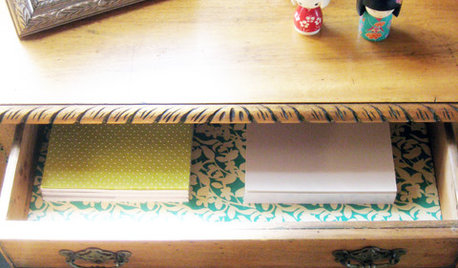


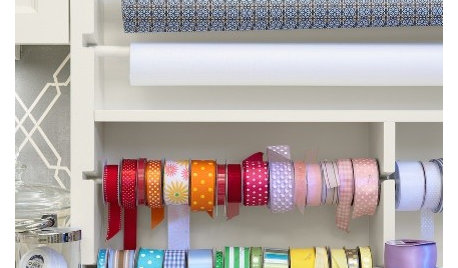










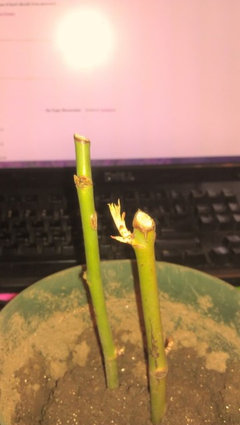
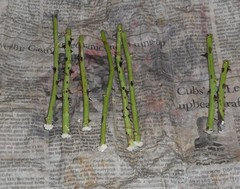


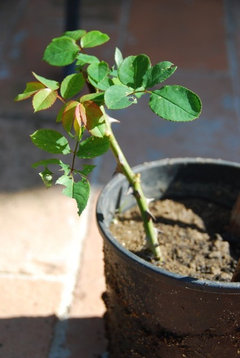
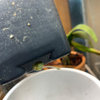
roseseek